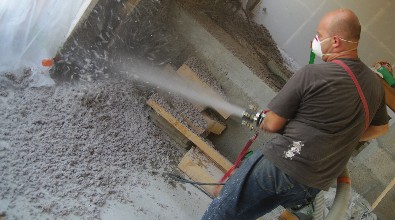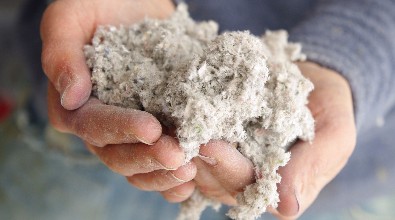Types of Blown-in Insulation
At Abbott Insulation Plus, we offer two types of blown-in insulation, fiberglass and cellulose. With blown-in insulation you can improve energy efficiency. Reduce building energy consumption for the life of your building.
Approximately one third of your structures heat loss is through your ceiling into the attic. No seams in your insulation gives you a complete blanket of thermal protection. Both types are installed in the same methods and applications.

Blown Fiberglass
Blown fiberglass you get a product that is generally 30-35% recycled matter, cellulose can be more. Fiberglass is non-combustible and non-corrosive. Fiberglass will not rot or decay and is formaldehyde free. Blown fiberglass will not settle. Blown fiberglass is odor-free and dustless.
Cellulose Insulation
Cellulose insulation is a plant fiber insulation. It is often made with 75-80% recycled materials. Cellulose insulation is often made by hammer milling waste paper treated with chemicals such as boric acid.
Borate treatment gives cellulose the highest fire safety rating. The Borate also provides added control against mold. Many companies use a blend of ammonium sulfate and borate.

Blown-in insulation of both types have many applications as mentioned before. Most people think of blown in the attic area which is the most common application. It also can be blown into your exterior walls.
Without removing your covering inside your home (sheet rock or plaster) we can drill holes from either the exterior or interior and dense pack insulation of either type. If you have new construction we can also blow those walls in by first installing a mesh fabric. Blown-in insulation easily installs around wires and outlet boxes.
